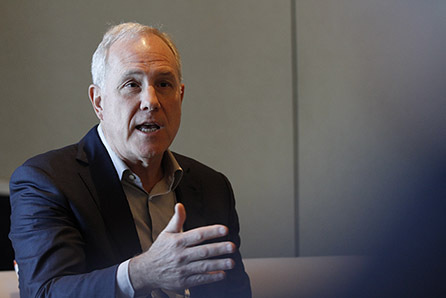When President George W. Bush appointed me as the nation’s first health information “czar” in 2004, my top priority was to ensure that Americans had access to their personal health information. I believed that arming people with health information helped them be healthier and live longer. Consumers could manage their health, shop for the best prices, ensure that every clinician knew their history and get access to the best treatments.
The health care system benefitted as well. Sharing information about patients reduces duplication, wasteful treatments, improper care and errors. We estimated that up to a third of health spending – a startling $1 trillion dollars a year – could potentially be saved by making healthcare more efficient and higher in quality.
The key to this vision was to make our health information tools interconnected and interoperable – to create a single integrated record for each person. We called this effort the Nationwide Health Information Network (NHIN). The installed base of electronic medical records in 2004 was very low and the vendors who developed them were small and passionate (this was long before the founders of those companies became billionaires). With few electronic records in place, we had a one-time chance to get the NHIN in place before electronic records became widely adopted.
See also: The Health Evolution CEO Guide to Artificial Intelligence in Health Care
Within a few days of my appointment, I was visited by Neal Patterson, the visionary late founder of Cerner. After hours of talk, gallons of coffee and drawing on an endless supply of paper napkins, we sketched out how the NHIN could come together and be light, scalable and flexible. Neal was relentless in his passion for this idea and talked to members of Congress and reluctant White House staffers to help them understand – which was no small feat in the early days of the internet for old-school policymakers. I asked him why he did this, since the NHIN would essentially gut the heavy enterprise architecture sold by electronic health record companies (both then and now) and harm his company. He said without hesitation that this was the right thing to do and if we got it right, everyone would benefit.
Of course, the Great Recession hit and electronic health record financing became part of the stimulus bill. Congress allocated $35 billion to help hospitals and doctors install electronic health records. These tools quickly became ubiquitous and electronic health record companies became giants. These tools have eliminated most paper and improved the information clinicians use, but they have failed miserably in bringing information to patients and consumers. In the rush to get every hospital and doctor online, we sacrificed making these tools technically capable of sharing information and didn’t say that health information belongs to the people whose bodies it comes from.
Last year, the Trump administration took up this left-over priority from the past. It proposed rules that require health care organizations to open secured machine-to-machine portals for information to be shared using common standards. It also proposed financial penalties if a technology company blocks a consumer from getting access to their data. These rules would transform the experience of consumers. We will finally be able to gather all of our health information in one place and make sense of it. If we want to switch physicians, hospitals or health plans, our data will move with us and we won’t have to fear retaliation. These rules were so widely supported among health technology advocates that all the former National Coordinators – who worked for Presidents Bush, Clinton and Obama – wrote a public letter of support for these rules. That letter can be read here.
The Trump Administration is now deciding whether these rules will be adopted. I believe that they will do so, with tweaks to certain issues, and by doing so come down squarely on the side of consumers and a stronger health care marketplace. I am proud to see that Neal Patterson’s Cerner has expressed full support for these rules. He clearly instilled in his company his conviction that those of us who benefit from public investments made by our fellow taxpayers have an obligation to give back to them.
Leading health care CEOs need to think about the long term and not fall prey to misinformed claims that these rules will harm health care organizations. In fact, it is the opposite – these rules will strengthen consumer engagement in healthcare and will protect health care organizations from technology partners. HHS Secretary Alex Azar, who demonstrated himself to be a strong advocate for interoperability when we worked together in the Bush Administration, described it best: “some industry stakeholders are defending the balkanized, outdated status quo”.
Those who lead our industry and care deeply about improving health cannot let this opportunity be lost. I call on all health care CEOs to embrace the interoperability rules, and to lead their organizations in making data interoperability a top priority for the benefit of patients, clinicians, researchers, the health care system itself, not to mention their own interests.
With all of the challenges we have in health care, we need to get consumers in the game with their health information and to show that a truly effective market economy can deliver the kind of health care that Americans want.
Read previous Leadership Matters columns by David Brailer:
Express Scripts: A pivot point for digital health innovation
Why CEOs should support price transparency











